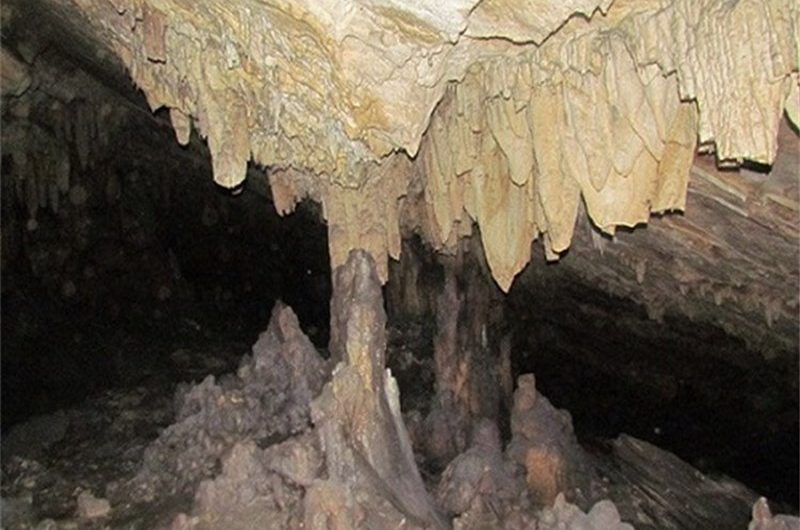Kalmakareh Cave
Lorestan, considered the cradle of Iranian civilization, enjoys a mountainous climate in the heart of Zagros Mountains. The discovery of bronze objects, the existence of caves like Mirmelas, Pasangar, Gararjaneh and bridges like Kashkan and Pol Dokhtar affirm its importance.
Kalmakareh Cave is located on Mahleh Hill, at a height of 650 meters above sea level. After passing through the Bagh Darreh village, there is a mountainous path that took us three hours to travel to reach the entrance of the cave. This natural cave has many stalactites and stalagmites that have been badly damaged by human intervention. The existence of huge clay pots, freshwater wells and clay objects (used for funerals) are proof of prehistoric life in the cave. There are four continuous rooms, of which only the first is slightly illuminated by the sunlight from the entrance, the other three are completely dark. The second room is reached by crawling down a hall 80 centimeters long.
Some believe that the cave had a ritual function. The discovered objects (13 wild goats, 8 bulls and 2 eagles) are recognized as the symbol of Mehr and the scene of the lion’s victory over the bull is believed to indicate the ritual of the slaughter of the bull in the Mehr cult. Kalmakareh comes from two words: Kalma, which means the refuge of the goats, and Kareh, which means the wild fig tree, both symbols of Mehr.
If you are passionate about caves, mountains, hiking, mountaineering, anthropology, historical landscapes and the fascinating culture of the Middle East, SITO Travel will help you organize your trip to Iran. Get in touch with us because our experience is born and developed in this field.



Comments